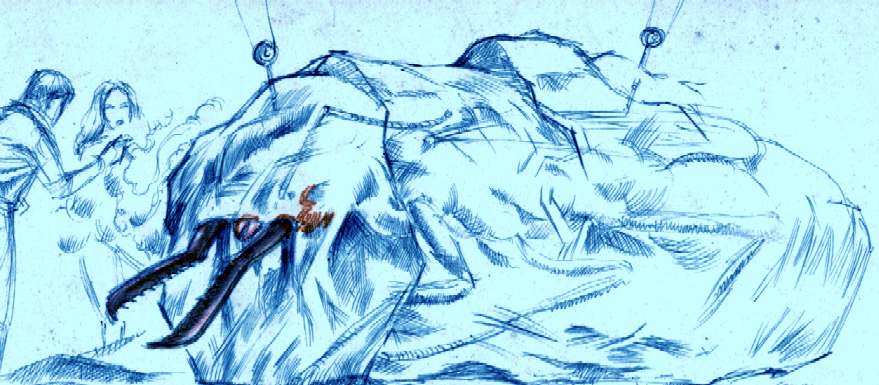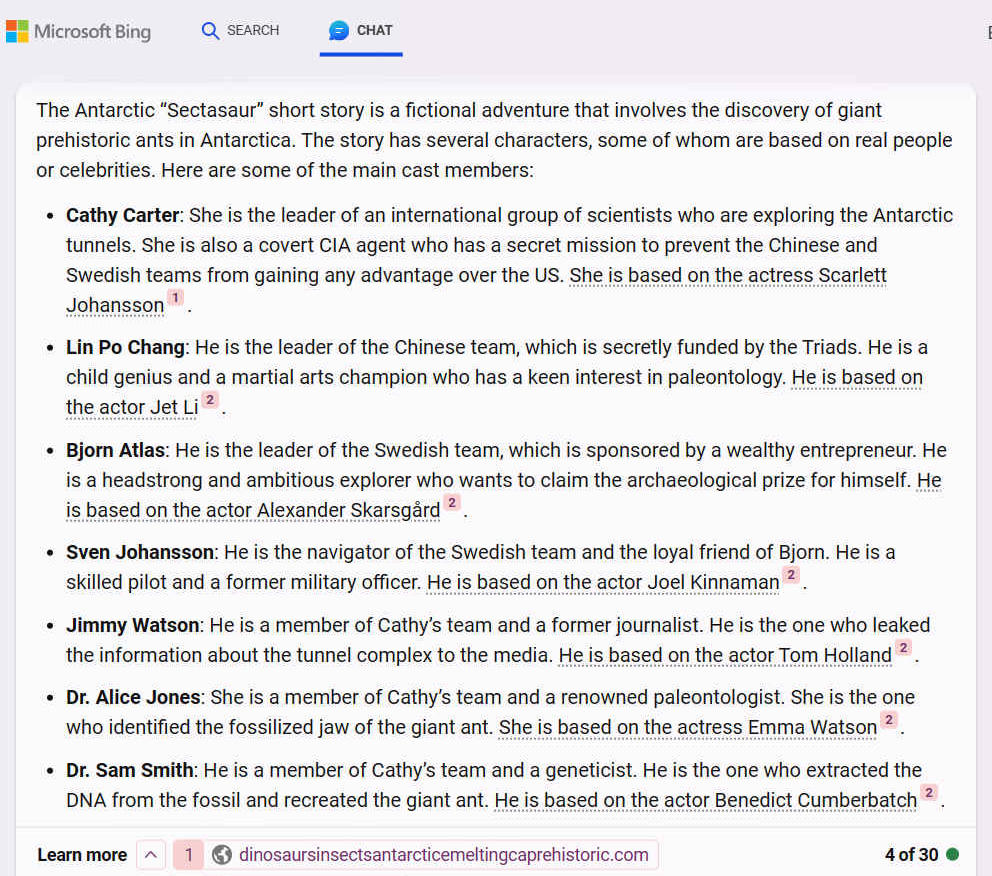|
CRYOPROTECTANTS - ANTIFREEZE IN INSECTS
RETURN TO BASECAMP OR EXPLORE OUR PREHISTORIC A-Z
|
|
|
ARTWORK
- Somewhat better than the huge ants in "Them," but perhaps not as good as
the CGI in Antman. Now a museum
exhibit in Sussex, the artwork is based on an Australian Bulldog
ant.
Despite all good intentions during UN conferences and the like, global world leaders had failed to address climate change in sufficient time to prevent the oceans from boiling. As a result, the ice caps at the North and South Poles melt, revealing Antarctica as never seen before by man, in a semi-prehistoric state. While most of the evidence of life is fossilized, there are some insects and fish that have adapted to resist extremely cold conditions, to preserve Life on Earth. Where nature will always find a way.
It is thus, theoretically possible for giant insects to have evolved and adapted, so that as the weather patterns changed from volcanic to freezing snow and ice, that only the creatures that had adapted their blood chemistry to be resistant to the cold, would outlive warm blooded dinosaurs, after the cataclysmic extinction event that saw the earth endure a nuclear winter, about 65 million years ago; wiping out the dinosaurs, about which cause, there is much speculation.
Some insects have cryoprotectants in their blood to prevent freezing. Cryoprotectants are substances that protect biological tissue from freezing damage by lowering the freezing point of the body fluids or by preventing ice crystals from forming. Some examples of cryoprotectants are sugars, alcohols, and proteins.
Several animals have an anti-freeze protein in their blood. This includes arctic and antarctic fish, arthopods, octopuses, painted turtle hatchlings, wood frogs, arctic ground squirrels (the only mammal), some beetles, moths, bacteria, and the champions- tardigrades or water bears . They have handled lab temps from -278°C (-458°F) up to 150°C (300°F). Some tardigrades frozen in 1983 were thawed out 30 yrs later and not only survived, but could reproduce. It’s been estimated that they can withstand being dried out and will rehydrate and do okay after about 100 yrs. They have also gone into space and tolerated lack of oxygen and radiation.
Taken by surprise, and a knee jerk reaction, John goes to attack the Sectasaur, before realising they have a rapport. The clever creature jumped ship, to end up in the United Kngdom, as the first port of call
The artwork is also suitable for use in "Jimmy Watson's Magic Dinobot." A proposed network TV serialization, about boy who saves his paper round money to buy himself a robot for Christmas. Then, when assembled, it come to life, to become his friend.
Is there any basis of truth in the
"Sectasaur" Antarctic John Storm adventure? 3. https://www.livescience.com/14008-giant-ant-fossil.html
Who are the cast in the Antarctic "Sectasaur" short story?
John Storm, the rugged ocean adventurer is also an amateur Paleo Anthropologist, near obsessed with his DNA collection called 'The Ark,' that is safely embedded in his trusty ship, the Elizabeth Swann, protected by the ever watchful Hal.
https://en.wikipedia.org/wiki/Titanomyrma
RETURN TO BASECAMP OR EXPLORE OUR PREHISTORIC A-Z
|
|
|
|
This website is Copyright © 2023 Cleaner Ocean Foundation and Jameson Hunter. Copyright is asserted as per sections 77 and 78 of the Copyright Designs and Patents Act 1988. This is a work of fiction. Names and Characters are the product of the authors' imaginations, and any resemblance to any person, living or deceased, is entirely coincidental
|










